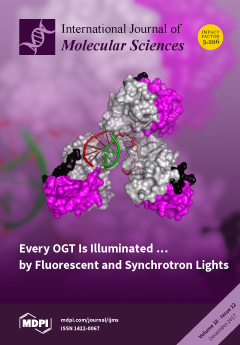We aimed to evaluate the expression of amine oxidase proteins in breast cancer and their clinical implications. We performed immunohistochemical staining of amine oxidase proteins (LOX, lysyl oxidase, AOC3, amine oxidase, MAOA, monoamine oxidase A, MAOB, monoamine oxidase B). Based on their hormone
[...] Read more.
We aimed to evaluate the expression of amine oxidase proteins in breast cancer and their clinical implications. We performed immunohistochemical staining of amine oxidase proteins (LOX, lysyl oxidase, AOC3, amine oxidase, MAOA, monoamine oxidase A, MAOB, monoamine oxidase B). Based on their hormone receptors, such as estrogen receptor (ER) and progesterone receptor (PR), human epidermal growth factor receptor 2 (HER-2), and Ki-67 immunohistochemical staining, breast cancer was divided into four molecular subtypes: luminal A, luminal B, HER-2 type, and triple-negative breast cancer (TNBC). Luminal A was observed in 380 cases (49.4%), luminal B in 224 (29.1%), HER-2 type in 68 (8.8%), and TNBC in 98 (12.7%). Stromal AOC3, MAO-A, and MAO-B expression varied according to molecular subtypes. Stromal AOC3 expression was high in luminal B and HER-2 type and MAO-A expression was high in luminal A and luminal B (
p < 0.001). MAO-B expression was higher in TNBC than in other subtypes (
p = 0.020). LOX positivity was associated with high histological grade (
p < 0.001) and high Ki-67 labeling index (LI) (
p = 0.009), and stromal AOC3 positivity was associated with high histological grade (
p = 0.001), high Ki-67 LI (
p < 0.001), and HER-2 positivity (
p = 0.002). MAO-A positivity was related to low histological grade (
p < 0.001), ER positivity, PR positivity (
p < 0.001), and low Ki-67 LI (
p < 0.001). In univariate analysis, MAO-A positivity was related to short disease-free survival in HER-2 type (
p = 0.013), AOC3 negativity was related to short disease-free survival and overall survival in ER-positive breast cancer, PR-positive breast cancer, HER-2-negative breast cancer, and lymph node metastasis. In conclusion, the expression of amine oxidase proteins varies depending on the molecular subtype of breast cancer. Stromal AOC3 expression was high in luminal B and HER-2 type, and MAO-A expression was high in luminal A and luminal B.
Full article






